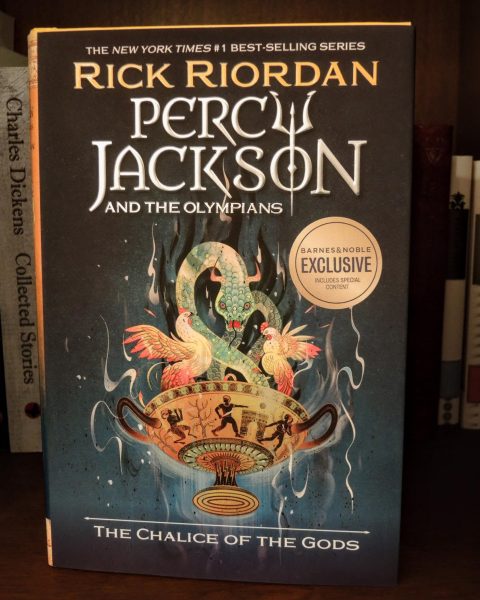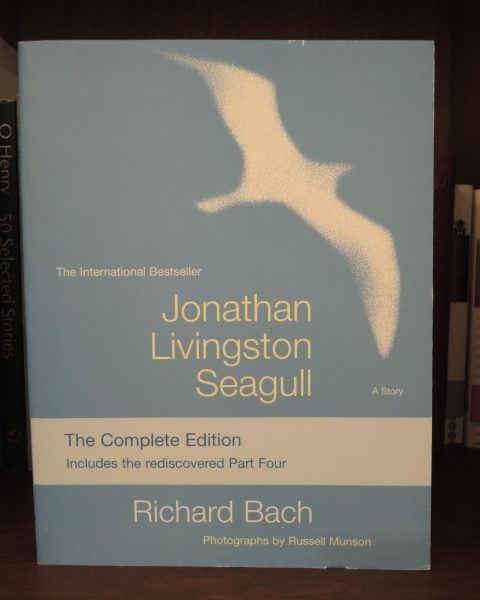“Ring for Jeeves”
By: P.G. Wodehouse
Whether you want a break from your assigned English class text or simply want a quick escape from life, P.G Wodehouse’s “Ring For Jeeves” will transport you to the English countryside in the mid-1950s, where you can follow along on a hilarious adventure that will be sure to make you chuckle.
Wodehouse, while not as well known as Rick Riordan or J.K Rowling, was a renowned English author known as a humorist. While this author’s use of older British English and subtle wit might not be for everyone, the stories are undeniably entertaining. However, these books tend to have many characters whose interactions intertwine to make somewhat complex webs throughout each story. So, it’s quite difficult to condense that into a small book review.
Wodehouse wrote a vast collection of books featuring two distinct characters, Bertram (Bertie) Wooster and his endlessly talented and trusty butler, Jeeves. In this particular book, however, Bertie is absent; instead, one of his friends, William Belfry, ninth Earl of Rowcester, has Jeeves under temporary employment. Wodehouse’s novels revolving around Bertie and Jeeves all put their characters in situations that are both entertaining and nerve-racking.
In “Ring for Jeeves,” Jeeves and William (or Bill for short) are posing as bookkeepers at a horse racing track so Bill can steal winnings to keep his old, large and expensive estate just long enough to sell it for profit. However, their situation takes a turn for the worse when they are nearly caught by the fearsome albeit dramatic Captain Brabazon-Biggar. At the same time, an American widow named Rosalinda Spottsworth enters the scene, wanting to buy Bill’s estate and steal Captain Biggar’s heart.
The back-and-forth between all the characters and constant cliffhangers made this book even more fun to read. There is a lot of humorous conflict tied in with over-the-top dramatics, but Wodehouse wrote it in a way that almost makes it seem like you are watching a show. I even found myself reading the dialogue with a British accent.
In the end, the drama is resolved by a single horse race during which a tidal wave washes Bill’s problems away. While this may seem complicated, it becomes easier to understand when you read Wodehouses’s storytelling and experience an old but refreshing genre.
“Percy Jackson and the Olympians: Chalice of the Gods”
By: Rick Riordan

Fifteen years since the release of the last Percy Jackson book, “Percy Jackson and the Olympians: The Last Olympian,” New York Times Bestselling author Rick Riordan has brought Percy Jackson, Annabeth Chase and Grover Underwood back for another sequel to the award-winning series. For those who religiously read the entire “Percy Jackson” series in middle school and grew up with these beloved characters, “Percy Jackson and the Olympians: Chalice of the Gods” offers a special chance to close out one final chapter by their side..
In this book, Percy and Annabeth are seniors in high school going through the college application process. For me, reading this book right when I was also knee-deep in college applications was like a bonding experience. However, that’s where our parallels ended, as Percy was required to get letters of recommendation from various gods and goddesses through a grueling quest for the chalice of the gods.
After years of quests, you would think this trio would catch a break, but that is hardly the case. Instead, they face giant poisonous lizards, vengeful gods and a showdown with old age to get one letter of recommendation.
Although it’s been a while since I’ve read one of Riordan’s books, when I first read this book, it was like I was picking up right where I left off. The story was easy to follow and reignited my extensive yet useless knowledge of Greek mythology. However, one interesting change was how I perceived the writing. When I finished the book, I had a much more profound understanding of the hidden meanings behind the plot. I concluded that this was a book about a beloved childhood character, but also about how he is growing up and facing challenges similar to ours.
While Percy finally got his letter of recommendation, that is hardly the end of this adventure. With him still needing two more letters from the gods, there are more quests in store for this iconic group. In fact, Riordan already has the next book in the arc “Percy Jackson and the Olympians: Wrath of the Triple Goddess” set to release in mid-September of this year.
“Jonathan Livingston Seagull”
By: Richard Bach

The traditional adage is “Don’t judge a book by its cover.” But for Richard Bach’s New York Times best-seller, a slight alteration might be more fitting: “Don’t judge a book by its title.” Although “Jonathan Livingston Seagull” might sound like a dumb children’s book, it is a powerful story of friendship, adventure and, of course, a seagull with a strange name. While this book can seem like a stark contrast from the comforting genres of fiction and fantasy, Bach writes in a way so that everyone can relate and see their own hidden meanings behind the story.
This short book follows a seagull named, yes, you guessed it, Jonathan Livingston Seagull. From the start, it is clear that Jonathan is unlike the rest of the Flock. This particular gull yearns to fly, to soar higher than any bird has before, but, of course, his dream is to remain a dream since flying fast and high is frowned upon. Despite these restrictions, Jonathan continues to break the rules until one day, he is exiled from the Flock and forced to live on his own for simply being different.
Out on his own, he meets with two other seagulls who take him up into the sky. This is presented as a supposed afterlife for Johnathan, where older, wiser gulls teach him to fly at full speed while perfecting the art of flying. These somewhat fairytale aspects of the story allow much room for interpretation on the reader’s part. For me, this “heaven” represents the next level of Johnathan’s journey, a place where he is not alone but accepted and supported so that he can grow.
Eventually, Jonathan becomes one of the elder gulls, taking on his own students and teaching them the knowledge he was given. Eventually, Jonathan “passes,” and the story shifts to focus on each of his students passing down the same wisdom until it comes full circle with a young seagull named Anthony. This gull only sees Johnathan as a myth, a deity that is just a symbol; however, on the last page of the book, he meets Johnathan at last.
The true intentions behind each word in this book are ambiguous. Bach wrote a story of a seagull who wanted to fly and turned it into a thought-provoking tale of learning, growth, freedom, aspirations and so much more. “Jonathan Livingston Seagull” has been and continues to be one of the best books I have ever read.
For anyone who picks up this book, reading it is a personal experience. The meanings that I find in those pages might not be the same as someone else, so I encourage you to read it and explore how Bach’s masterful writing about an adventurous seagull will impact you.













































